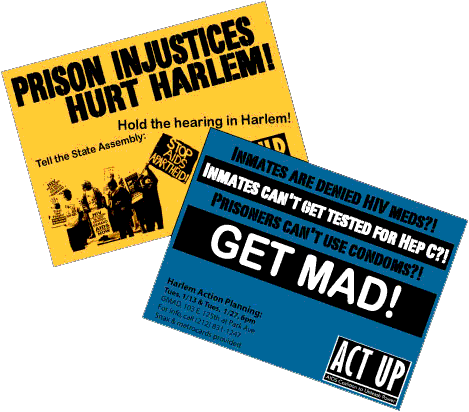The rest of the article is fascinating, too - this testing being widely available for Hep C prisoners could make a difference for a lot of people who may otherwise be written off as poor treatment responders before they even get a chance.
Society of Correctional Physicians
Originally published June 21, 2010
This situation may soon change since genetic analysis of the host will soon be able to predict which patients are more likely to respond to treatment. Just as testing for the HLA-B*5701 allele has helped physicians predict which HIV+ patients will have a hypersensitivity reaction to Abacavir, a similar genetic assay may soon be available to assist prediction of response to treatment for hepatitis C patients.
A paper published in September 2009 by Ge et al. represents an advance in personalized medicine that will address an issue important for many people. Researchers identified a polymorphism (rs12979860) near the IL28 gene on chromosome 19 that was highly correlated with a favorable response to interferon among patients infected with genotype 1 of the hepatitis C virus3. The methods for their genome-wide association study (GWAS) are explained in an editorial that accompanied Ge’s article4. In American patients of European and Hispanic descent, homozygosity for this allele was correlated with a twofold increase in response to treatment compared those in whom the allele was absent. In patients of African descent, a threefold increase in response was noted; however, homozygosity was rare among these patients, which could partially explain their low rates of response to interferon. The authors estimated that this genetic variant accounted for approximately half the difference in treatment response between African-Americans and European-Americans.
Suppiah et al. and Tanaka et al. identified a second polymorphism (rs8099917) in a similar region near the IL28 gene which was strongly associated with response to combination treatment with interferon/ribavirin in Australian and Japanese patients, all infected with viral genotype 15,6. Most recently, Rauch et al. conducted a GWAS including all viral genotypes 1-4, and found that the rs8099917 minor allele was associated with both progression to chronic hepatitis C and failure to respond to treatment, with the strongest effects in patients infected with genotypes 1 or 47.
Several of these findings have important implications for correctional medicine. If 25% of prisoners have hepatitis C disease8 and 70% of these have genotype 1, then this advance will be important for about 1 in 6 patients currently in US prisons. Moreover, given that this genetic variant could explain much of the low response to treatment in African-Americans, having a test for the variant will be a useful tool in guiding treatment decisions. If and when a test for this genetic variant becomes commercially available, there will be some important caveats to consider:
• Having the test result will be important for both pre-treatment and during treatment counseling, especially if interferon tolerability becomes an issue.
• Although the response rate in persons without this gene is low and since one cannot predict who will respond, its absence should not disqualify a motivated patient from attempting treatment after appropriate counseling.
It is clear that we still need more treatment options and more effective treatments for hepatitis C. Currently, HCV specific protease inhibitors are in phase three trials. For patients who are responsive to interferon, triple agent therapy (interferon, ribavirin and the virus-specific agents) may eventually improve treatment outcomes. It is unlikely that the genetic markers that contribute to interferon and ribavirin resistance will have an influence on direct antivirals. At this point in time, no interferon sparing regimen is currently in trials and so those who test negative for IL28B testing will continue to face poor recovery rates.
References
1. Spaulding AC et al. A framework for management of hepatitis C in prisons. Annals of Internal Medicine 2006;144(10):762-9.
2. Klein SJ et al. Promoting HCV treatment completion for prison inmates: New York State's hepatitis C continuity program. Public Health Reports 2007;122 Suppl 2:83-8.
3. Ge D et al. Genetic variation in IL28B predicts hepatitis C treatment-induced viral clearance. Nature 2009;461(7262):399-401.
4. Iadonato SP et al. Genomics: Hepatitis C virus gets personal. Nature 2009;461(7262):357-8.
5. Suppiah V, et al. IL28B is associated with response to chronic hepatitis C interferon-alpha and ribavirin therapy. Nature Genetics 2009;41(10):1100-4.
6. Tanaka Y, et al. Genome-wide association of IL28B with response to pegylated interferon-alpha and ribavirin therapy for chronic hepatitis C. Nature Genetics 2009;41(10):1105-9.
7. Rauch A, et al. Genetic variation in IL28B is associated with chronic hepatitis C and treatment failure: a genome-wide association study. Gastroenterology 1345;138(4):1338-45.
8. Weinbaum C et al. Prevention and control of infections with hepatitis viruses in correctional settings. CDC. MMWR Recomm Rep 2003; 52(RR-1):1-36. .
































